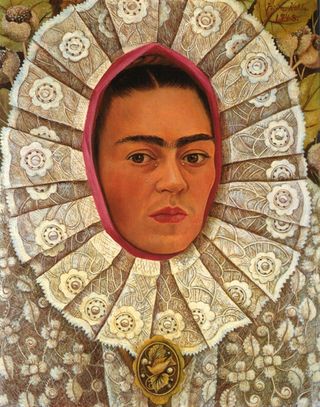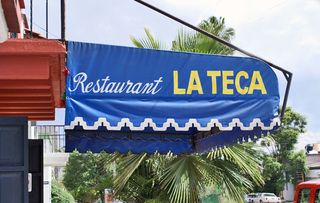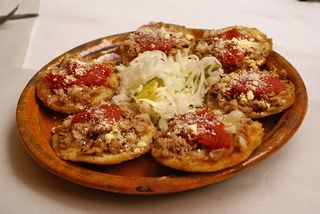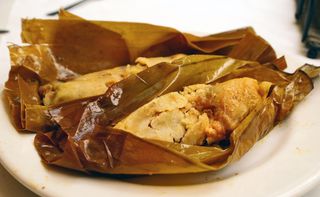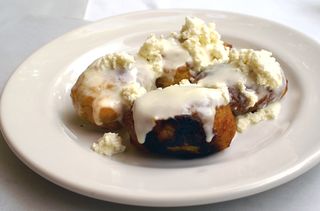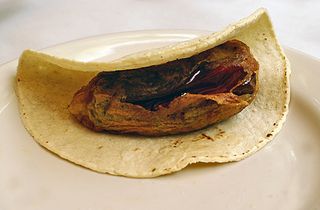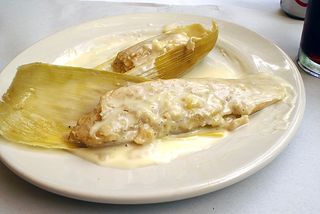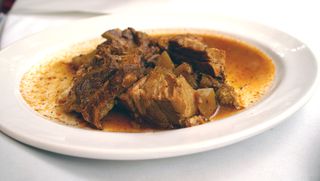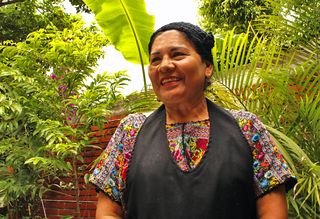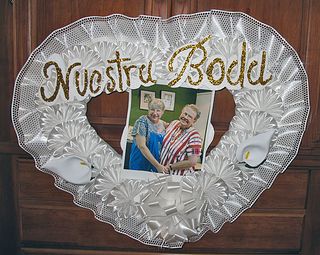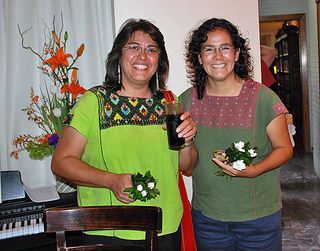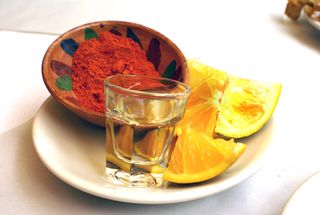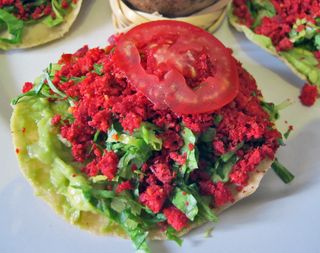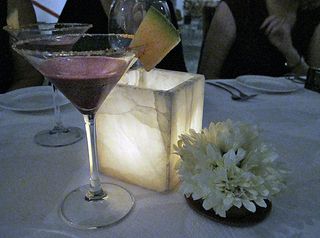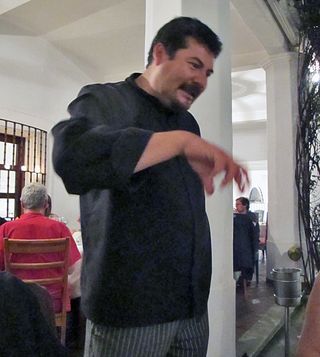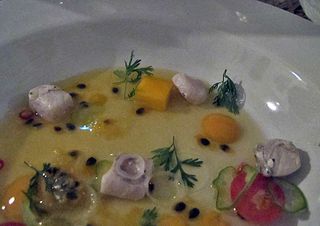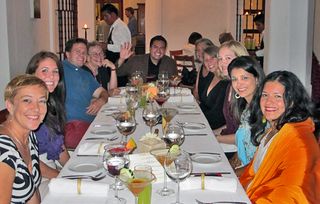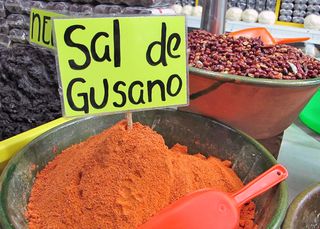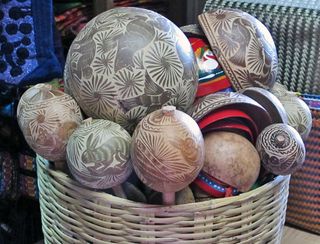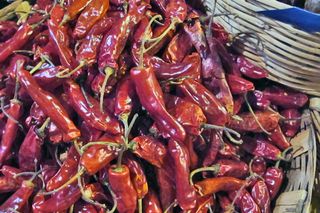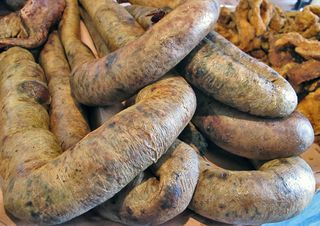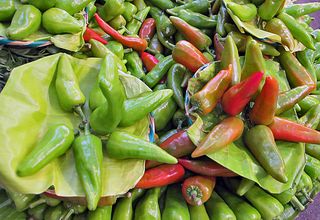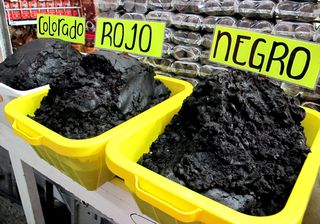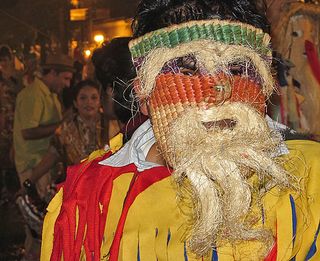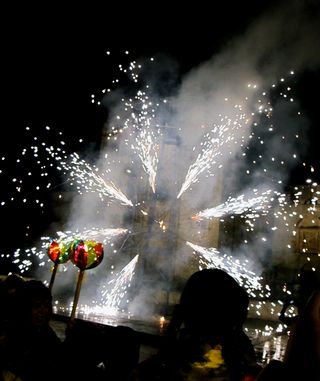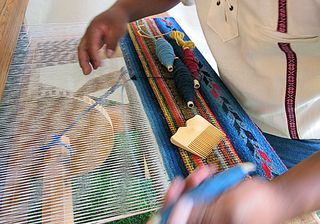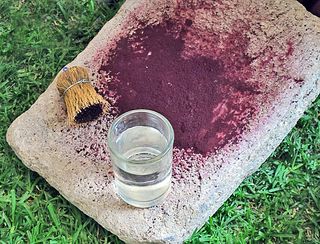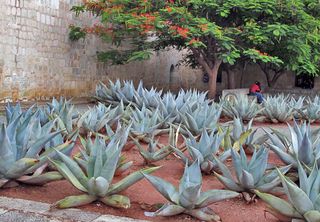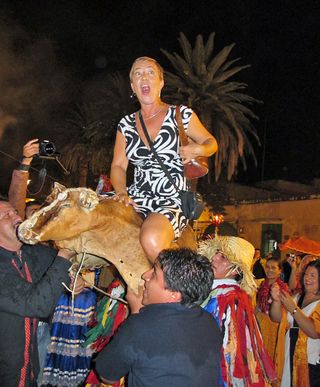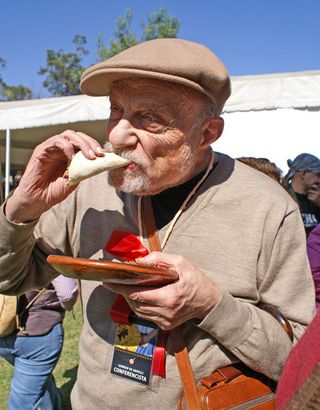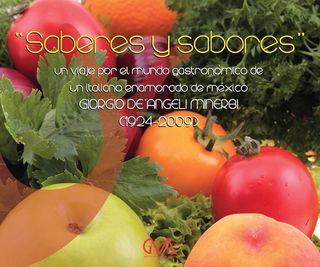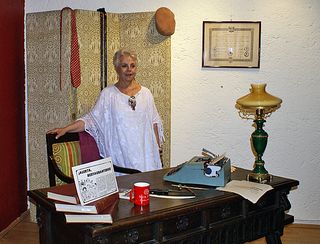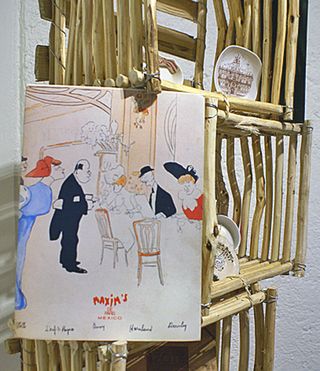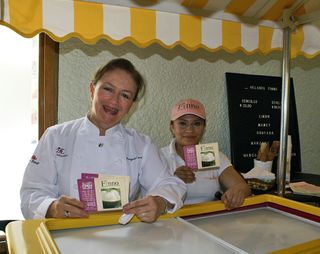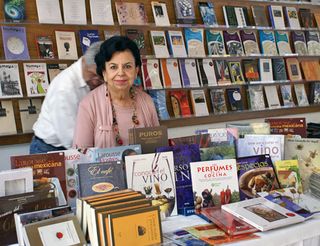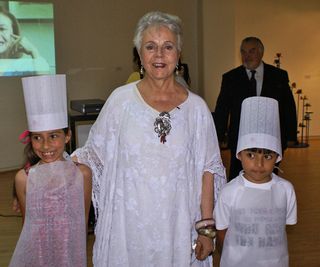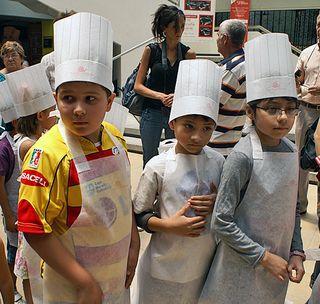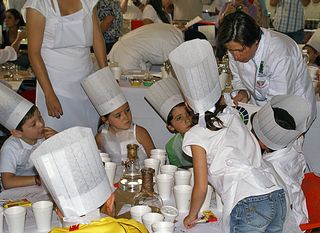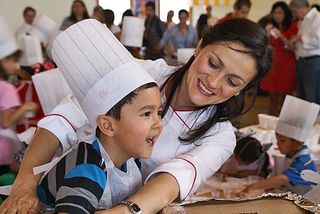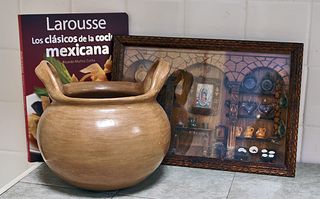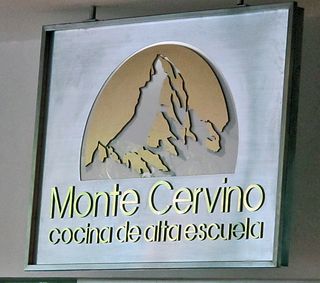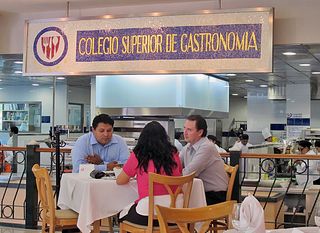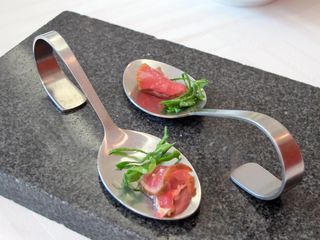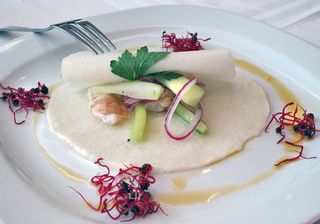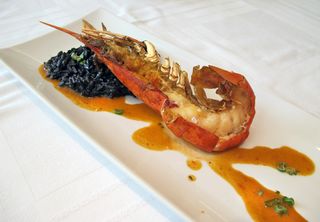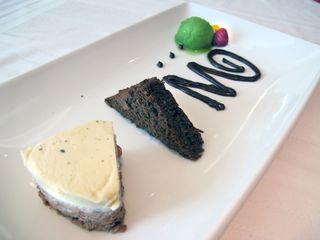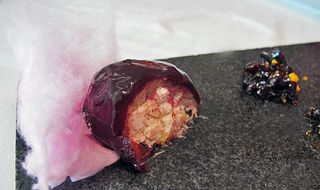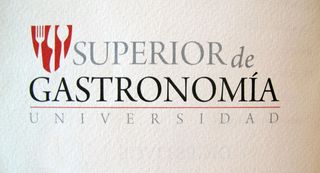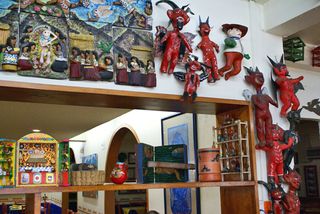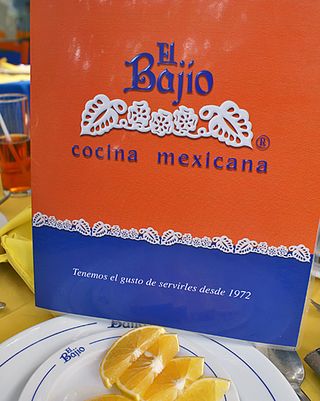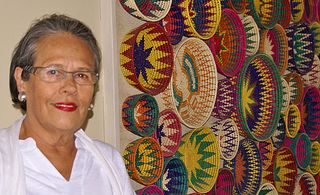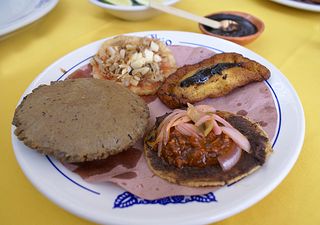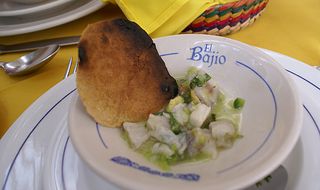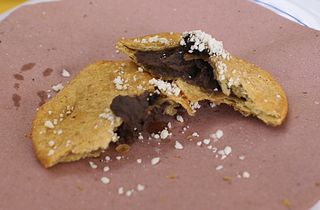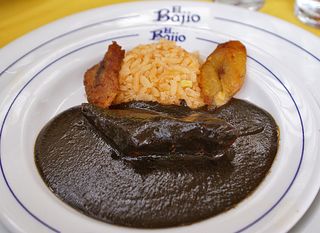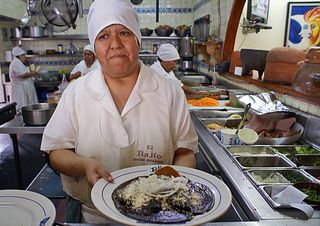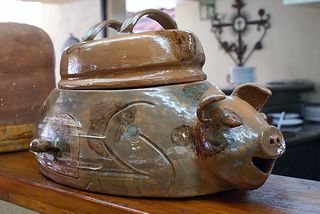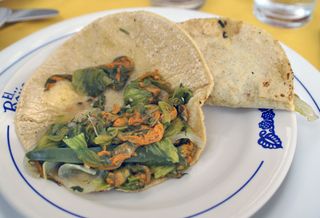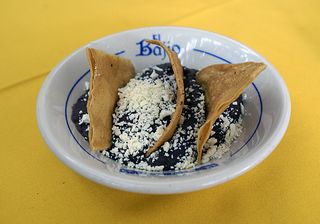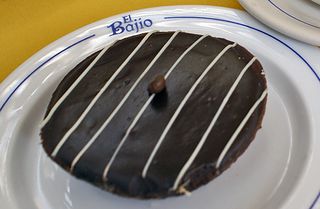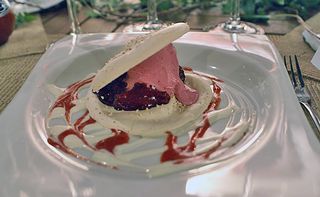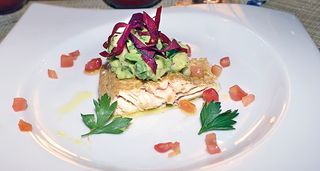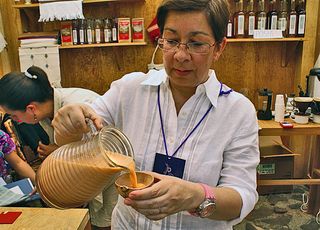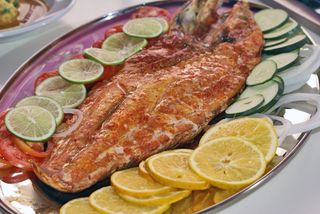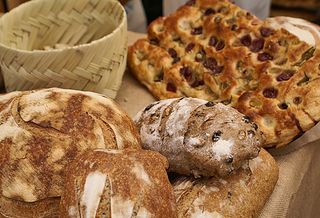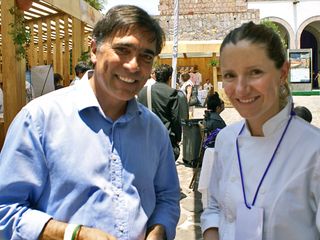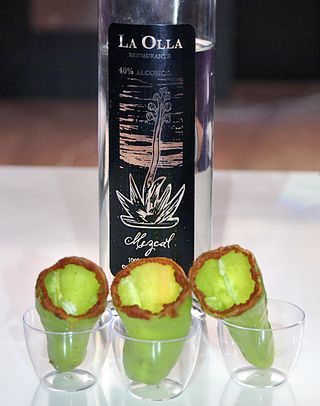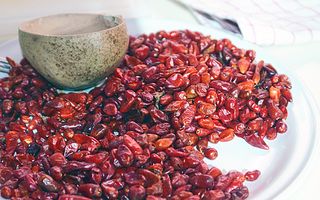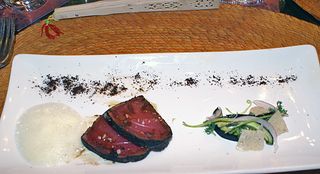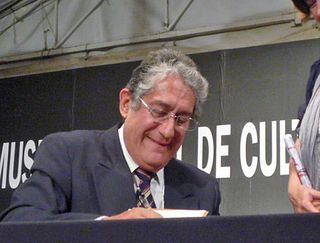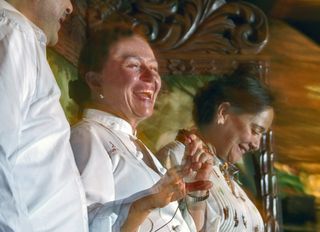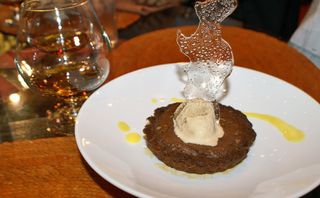
Although Mexico Cooks! photographed this sign about two years ago in Los Angeles, California, it absolutely represents what you will be served for comida (main midday meal) at a fonda, a cocina económica, a cocina regional, or a comedor in Mexico: authentic home made food.
There has been a big change in Mexico Cooks!' life due to our recent move to Mexico City. We have been cooking less at home, eating out more frequently, and eating a different style food than was our custom in Michoacán. Although we have recently enjoyed a tremendous variety of great food in some of the upscale restaurants here in the Distrito Federal, our hearts continue to belong to the fondas, cocinas económicas, cocinas regionales, and comedores that blossom all over Mexico City and indeed, all over the country.
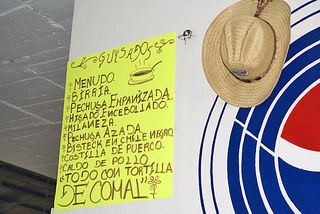
Menú del día (today's menu) at the Fonda 127, Mercado San Nicolás, Morelia, Michoacán. Click on the photo to enlarge it for a better view. You'll see that the daughters of the family who made the sign used the letter 'Z' where you might expect to find the letter 'S', and the 'N's are all backwards. It's just a 'toque personal'–personal touch. And the word guisados, at the top of the list, simple means 'dishes', in this case those that are being served today.
In Mexico, almost any fonda is by nature a small and inexpensive eating establishment presided over by the proprietors. Generally those proprietors are women (sisters, sisters-in-law, cousins, or comadres), but sometimes you'll be attended by a husband and wife plus their older children. Although you can order a meal a la carta (from the regular printed menu), it's most common to order the menú del día, also known as comida corrida. Under either name, the menú changes every day and consists of your choice of items in three courses: caldo or crema (soup), a sopa seca (normally either rice or spaghetti), one of several guisados del día (main course of the day), plus a small courtesy postre (dessert).
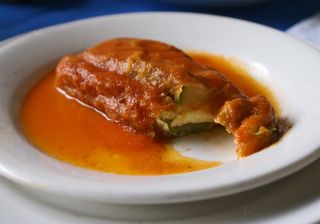
Home-style tortita de calabacita en caldillo de jitomate (little zucchini croquette in tomato broth) as served at the late, lamented, long-time Morelia fixture, Los Comensales (the name means 'the diners'). Los Comensales closed its doors in 2010; the presiding owner, Sra. Catalina Aguirre Camacho, was unable to continue in business due to her advanced age.
We're fortunate to live just around the corner from a wonderful fonda, El Portalito. But we're not alone: I suspect that the majority of people who live in Mexico City could say the same thing about a fonda in the colonia (neighborhood) where they live. For example, our good friend David Lida, who lives on the other side of our colonia, has his special favorite–we loved it when we recently ate there with him, but it's around the corner from his house, not ours, and it's just a bit too far away for us to walk there regularly for a meal.
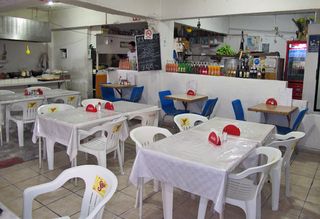
The interior of El Portalito, in Colonia Condesa on Calle Chilpancingo between Aguascalientes and Tlaxcala.
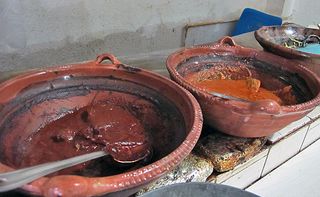
Cazuelas (wide clay cooking pots) on the El Portalito stove. You can see that we were there a little later than the normal hora de comer (eating time)–the cazuelas are nearly empty. Left, carne de cerdo en adobo. Right, salsa ranchera for the beef dish of the day.

One of the many stands for Mexico City's wonderful Ecobicis is just a couple of steps from El Portalito–I took the photo from our sidewalk table. Enroll in the Ecobici program, grab a bicycle at a stand near your house, ride it over to the restaurant, park it here, have your lunch, and take another bike to go back home!
The other day we spent several happy hours shopping at the fabulous Mercado de Jamaica and oops–we got off at the Metro stop close to home just a few minutes before fainting from hunger. No time to cook! Where to eat? El Portalito, of course! We wanted to leave our purchases at home before returning to have our comida (main meal of the day), so we checked out the menú del día as we passed by. Of course we told our favorite waitress that we would be right back.
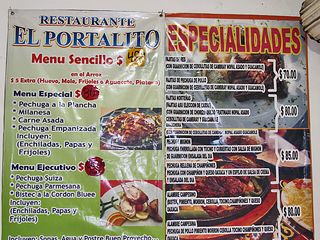
The standard daily offerings at El Portalito.
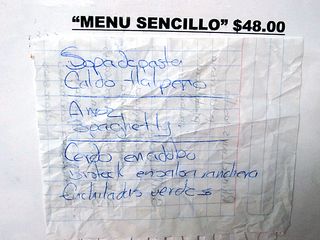
The menú del día is always written on a menu board and hung on the wall and, in addition, is hand-written on a little piece of tablet paper, stuck under a piece of plastic inside the regular a la carta menu.
The recent day we stopped in at El Portalito, the menú sencillo offered a choice of one each of the following:
- sopa de pasta (brothy soup with a large amount of small pasta cooked in it) or caldo tlapeño (another brothy soup with vegetables, including the traditional garbanzos)
- Arroz a la mexicana (cooked in a thin tomato broth with diced fresh vegetables) or spaghetti (either buttered or slathered in a creamy sauce)
- Cerdo en adobo (pork meat in a chile-based sauce), bisteck en salsa ranchera (thin pieces of steak in a tomato-based sauce, or enchiladas verdes con pollo deshebrado (green enchiladas with shredded chicken breast)
- Postre (dessert), on the house
The total cost for the menú del día sencillo is 48 pesos. The cost of the menú also includes a basket of fresh telera (bread), tortillas, if you like, house-made salsa (either red or green, depending on the day you're there) and the agua fresca del día (fresh fruit water of the day), all you care to drink.
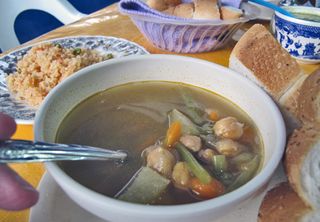
We both ordered the caldo tlalpeño. We like to add a squeeze of limón, a pinch of salt, a spoonful of salsa, a bigger spoonful of rice, and a sprinkle of salt. It's not fancy, but it's definitely delicious.
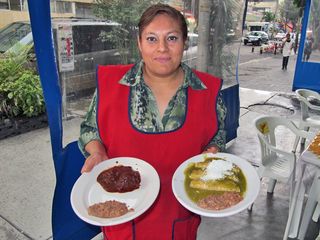
Our favorite waitress, Gloria Callejas, with our main courses in hand. She told us that El Portalito has been serving breakfast and midday meals to hungry customers for 26 years. We ate out on the sidewalk, where there are three or four tables and lots of lovely fresh air.
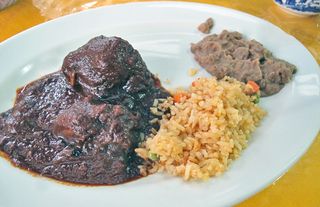
Judy's spiced-just-right cerdo en adobo. It comes with frijolitos refritos and she had saved some of her arroz a la mexicana to enjoy with it. The rice is always served with the soup course, in case you want to add some rice to your soup.
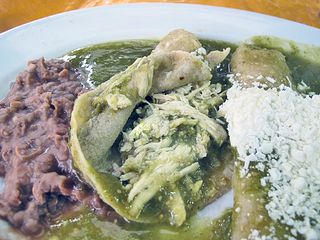
My very nice order of three enchiladas verdes con pollo deshebrado, which also are served with frijolitos refritos. I opened up one of the enchiladas to show you the large quantity of shredded chicken breast inside. The enchiladas arrive topped with crema and queso rallado (Mexican table cream and grated cheese).
The menú drink of the day was agua fresca de melón (fresh house-made cantaloupe water). It was absolutely wonderful, made of sweet, ripe cantaloupe served frothy and chilled. It matched the tablecloth, too–a definite plus. My other favorite agua at El Portalito is sandía (watermelon). Or maybe guayaba (guava). Or…oh, all of the aguas frescas that they prepare are delicious. I can't possibly choose just one favorite!

The dessert gesture was lime gelatin. Usually it's served in little plastic cups. We were impressed by these little 'crystal' cups the last time we were at El Portalito.
In Mexico City's Centro Histórico, you'll find many popular old-time fondas. Here are a few you might want to try:
La Casa Humboldt
República de Uruguay #86
Cocina América
Callejón 5 de mayo Letra K
Cocina Elizabeth
Palma #9, Letra F
Fonda Mi Lupita
Mesones #113
Each of these serves home-style Mexican food at very affordable prices. Expect to pay between 40 and 60 pesos for a full menú del día.
If you're in Mexico Cooks!' neighborhood and want a dependable and inexpensive meal, El Portalito is the place. It won't be high-end modern food with fancy designer presentations, but you'll love what you taste and will leave with this old Mexican dicho (saying) in your mind: "Panza llena, corazón contento." (Full stomach, happy heart.)
El Portalito
Calle Chilpancingo between Tlaxcala and Aguascalientes
Across from the IMSS Hospital
Colonia La Condesa
Looking for a tailored-to-your-interests specialized tour in Mexico? Click here: Tours.
Disclaimer: Marca País-Imágen de México is a joint public and private sector initiative designed to help promote Mexico as a global business partner and an unrivaled tourist destination. This program is designed to shine a light on the Mexico that its people experience every day. Disclosure: I am being compensated for my work in creating content for the Mexico Today program. All stories, opinions, and passions for all things Mexico that I write on Mexico Cooks! are completely my own.

